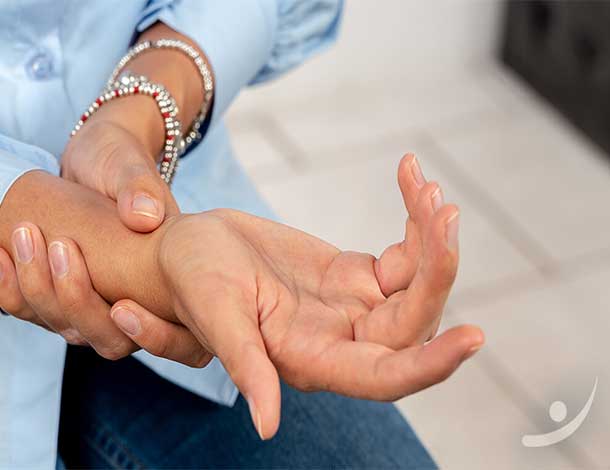What Is Carpal Tunnel Syndrome?
This article explains what is carpal tunnel caused by and how it’s diagnosed and treated.
When it comes to carpal tunnel syndrome, understanding the condition starts with knowing more about what happens when the median nerve at your wrist gets compressed.
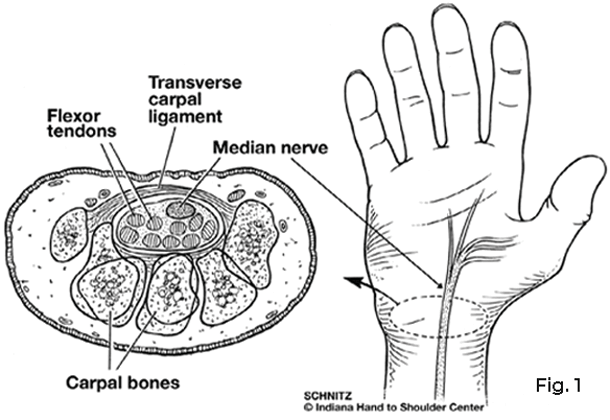
The carpal tunnel is a passageway in the wrist formed by the eight carpal (wrist) bones, which make up the floor and sides of the tunnel, and the transverse carpal ligament, a strong ligament stretching across the roof of the tunnel. (Fig. 1)
Inside the carpal tunnel are nine flexor tendons that flex (bend down) your fingers and thumb. Also running through the carpal tunnel is the median nerve, a cord about the size of a pencil containing thousands of nerve fibers supplying sensation (feeling) to your thumb, index and middle fingers, and half of the ring finger. Your median nerve lies directly beneath the transverse carpal ligament.
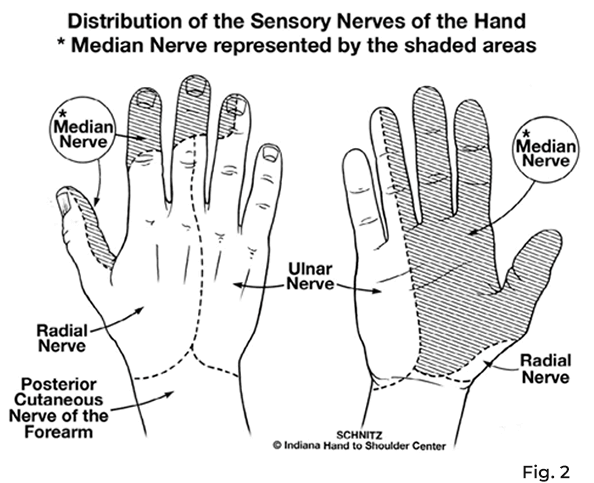
Carpal tunnel syndrome is caused by increased pressure in the carpal tunnel resulting in compression of the median nerve. When the median nerve is pushed up against the ligament, blood flow and the normal physiology to the nerve is restricted, causing a sensation often described as “pins and needles” to the fingers. In severe or chronic cases, numbness can be constant. (Fig. 2)
What Are the Causes?
Figuring out what is carpal tunnel syndrome caused by requires looking for a variety of problems. Certain medical conditions that may lead to compression of the median nerve include:
- Inflammation or Swelling About the Tendons
- Fluid Retention
- Wrist Fractures and Dislocations
- Crushing Injuries to the Wrist
- Rheumatoid/Degenerative Arthritis
- Diabetes
- Tumors and Tumor-Like Conditions
- Pregnancy
There is considerable debate as to whether specific work activities may lead to what is carpal tunnel syndrome. Certain occupational activities which involve high force and high repetition of the fingers or wrist or prolonged use of vibrating tools may contribute to the development of carpal tunnel syndrome. Despite popular belief, keyboard activities have not been shown to definitively cause carpal tunnel syndrome.
Determining whether or not carpal tunnel syndrome is a work-related condition can be challenging. Each case must be considered individually and must be based on documentation of specific work and recreational activities that may contribute to this condition.
Non-work-related activities of daily living and leisure may also provoke symptoms of carpal tunnel syndrome. Lawn mowing, long-distance driving, or hobbies such as knitting or wood carving are activities that involve prolonged or repetitive grasping and wrist flexion and may elicit symptoms of what is carpal tunnel syndrome. Any activity that involves substantial grasping can aggravate symptoms.
What Are the Signs and Symptoms?
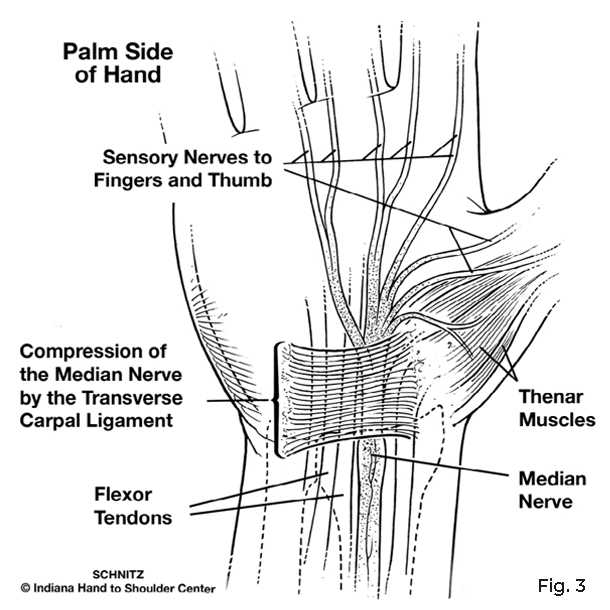
Numbness, burning, or tingling of one or more fingers (excluding the little finger) is the most common symptom of carpal tunnel syndrome. This numbness can happen at any time; often, these symptoms occur at night and may awaken the individual from sleep.
Partial relief can sometimes be gained by shaking, massaging, or elevating the hands. The numbness and pain may sometimes extend up the arm, into the elbow, and as far up as the shoulder and neck.
A decrease in sensation or feeling may result in clumsiness and weakness of the affected hand. Patients may find themselves dropping objects and being less capable of performing tasks requiring gripping or pinching strength.
On the palm side of the hand, just below the thumb, is a bulging pad of muscle called the thenar muscle group. Some of these muscles are controlled by the median nerve. With advanced carpal tunnel syndrome, this muscle group may begin to waste away, giving a flattened appearance to the palm when compared to the other hand.
How Is It Treated?
Conservative treatment of patients with mild symptoms of what is carpal tunnel syndrome usually involves modifying activities that may provoke symptoms. Your physician may prescribe a splint to be worn to restrict movement of the wrist. Depending on the severity of the condition, the splint may be worn during the day or night. The time the splint is needed varies but can be for approximately four to six weeks.
In some instances, a cortisone injection may be administered into the carpal tunnel to alleviate symptoms. This may significantly reduce the patient’s discomfort. (Fig. 4)
Surgery may be recommended when conservative treatment does not achieve the desired results or in cases involving more severe symptoms, such as thenar muscle wasting and extensive weakness and numbness.
Surgery is usually performed on an outpatient basis. An incision is made on the palm, and the surgeon will cut (release) the ligament forming the roof of the tunnel. (Fig. 5) This relieves the pressure on the median nerve.
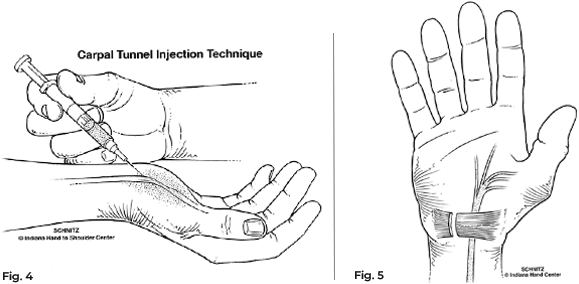
Fig. 5: Transverse carpal ligament is divided to decompress the median nerve.
What Is Carpal Tunnel Recovery?
With the blood flow to the median nerve restored, the symptoms of burning and tingling are usually relieved soon after surgery. Patients can expect soreness from the incision for four to six weeks and discomfort from deep pressure for as long as several months.
Improvements in strength and sensation depend on the extent of the nerve damage before treatment. Normal grip strength may not return for several months following surgery. The natural healing process and regeneration of nerve fibers will occur throughout the following six months to a year.
Some patients with severe nerve damage before surgery may never regain normal sensation postoperatively. The degree of nerve damage prior to the surgery is highly variable.
During the recovery period, your physician may recommend a program of hand therapy to regain strength, reduce discomfort, and increase the range of motion in the fingers and hand.
No part of this work may be reproduced without written permission from the Indiana Hand to Shoulder Center.
Disclaimer: The materials on this website have been prepared for informational purposes only and do not constitute advice. You should not act or rely upon any medical information on this website without a physician’s advice. The information contained within this website is not intended to serve as a substitution for a thorough examination from a qualified healthcare provider. The display of this information is not intended to create a health care provider-patient relationship between the Indiana Hand to Shoulder Center and you.
Carpal Tunnel Patient Handout

